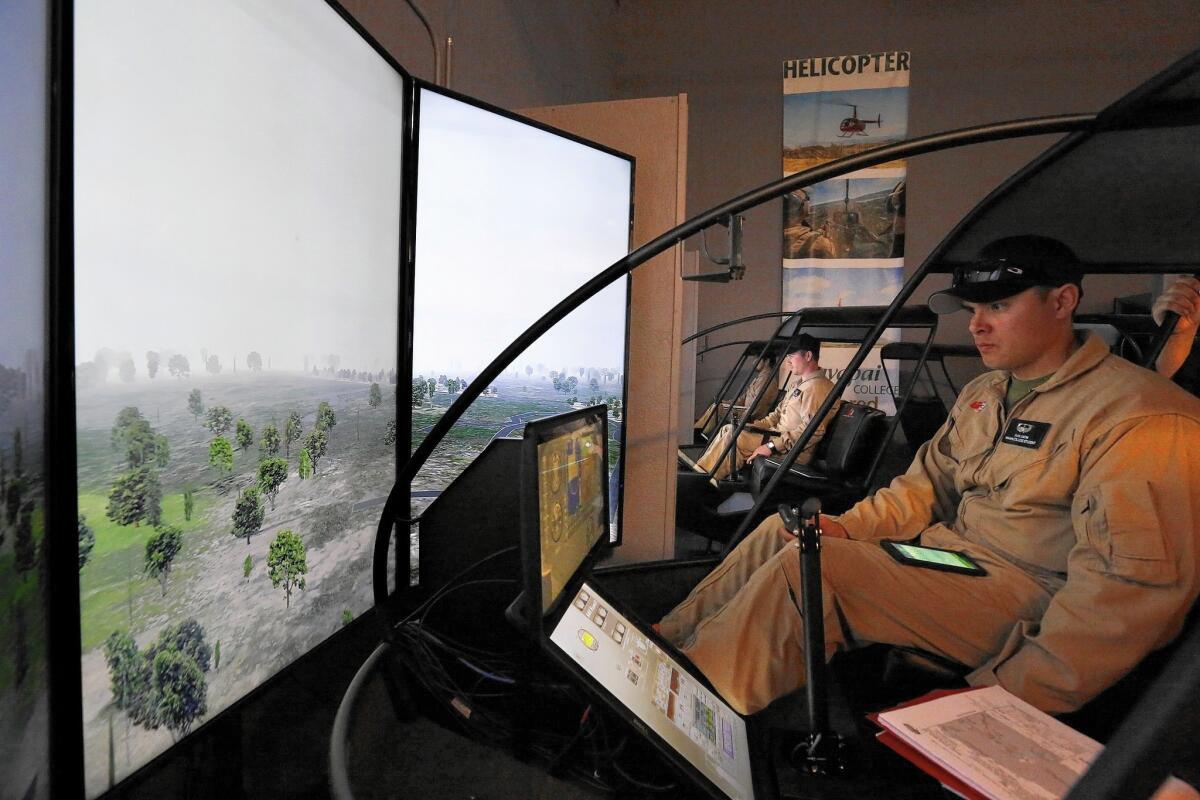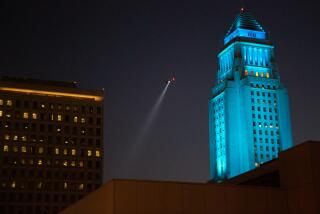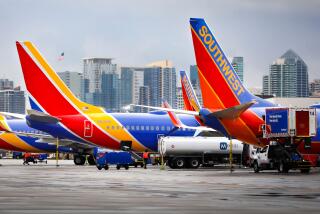Government halts enrollment of veterans in helicopter flight program

Marine Corps veteran Ryan Smith trains in a helicopter flight simulator at Yavapai College in Prescott, Ariz., under a government-funded program. The Department of Veterans Affairs has barred new enrollees in that program.
The federal government, concerned about violations that have cost taxpayers tens of millions of dollars, has barred new enrollment of military veterans in an Arizona flight program and is reviewing the conduct of a second, Utah-based school.
The actions by the Department of Veterans Affairs came less than two weeks after a Times investigation disclosed that helicopter flight companies, aided by public colleges and universities, had exploited a loophole in the latest GI Bill to collect high fees for training — more than $500,000 for a single veteran in some cases — and that the VA enabled some of the spending by not enforcing its own rules.
The two programs cost the government at least $40 million last year, based on enrollments and average cost data.
Most of that money goes to the flight training companies, which rely heavily on the GI Bill because few nonveterans can afford to pay for the training themselves.
In a letter Tuesday, the VA cited Yavapai College in Prescott, Ariz., for failing to comply with a regulation mandating that nonveterans account for at least 15% of students in any education program funded by the GI Bill.
The rule is designed to ensure that programs are affordable enough and of sufficient quality that at least some students are willing to invest their own money.
At Yavapai, which contracts with Guidance Aviation, all 90 helicopter students currently enrolled are veterans, according to the letter.
Yavapai officials did not respond to email or phone messages seeking comment.
The VA is also reviewing enrollments in the flight program at Southern Utah University in Cedar City, the university’s president said Thursday.
The Times reported this week that the school, which contracts with Upper Limit Aviation, has just 10 nonveterans in its helicopter program. But the VA is currently paying for the training of 194 veterans — 137 more than should have been allowed under the rule.
VA officials declined to answer questions Thursday about how the programs were allowed to drift so far out of compliance. In general, when the agency suspends a program, students already enrolled are allowed to finish the current term and return only if the school comes back into compliance.
Given the difficulty of finding nonveterans able to afford the training, both schools have long struggled to meet the 15% requirement.
Until now, however, the VA has not strictly held them to the requirement.
In June 2011, more than a year after Yavapai started its helicopter program and contracted with Guidance, the VA ordered the college to stop enrolling more veterans in flight training until it complied with the 15% rule, federal documents show.
Two months later, the VA lifted the ban. According to a whistle-blower lawsuit, Yavapai had started enrolling Guidance employees in ground school classes toward aviation degrees.
John Stonecipher, the owner of Guidance, said classes at Yavapai were a benefit for his employees. Yavapai has declined to comment on the lawsuit.
In 2013, the college created a degree called aviation technology, which included the helicopter and airplane students but also many nonveterans studying airport management or other aspects of aviation that don’t require flight training.
By calculating the ratio based on all the students in that degree program — not just those seeking to become pilots — the college could meet the 15% threshold, John Morgan, who oversees the program at the college, said in an interview last month. He said the VA endorsed that approach.
Similarly, in its calculations, Southern Utah University includes many nonveterans who are not learning to fly but are pursuing the same formal degrees — general studies and interdisciplinary studies — as the helicopter students.
In response to questions from The Times this week, the VA said it was reviewing the methodology its compliance officers have been using. Federal law requires each emphasis within a specific major to meet the 15% threshold on its own, the agency said.
Scott Wyatt, the president of Southern Utah University, said that interpretation was an about-face for the VA.
“We designed the program based on advice from the VA,” Wyatt said. “We followed the directions exactly, and now we have a black eye.”
He said he was consulting the Utah state attorney general for help interpreting the 15% rule and how student ratios should be calculated.
If only students training to become helicopter pilots are counted, the program has been out of compliance since it started in the fall of 2013, according to data the university provided to The Times. During that first semester, 62 veterans and only two nonveterans were enrolled.
By the following summer the veteran count was up to 119. In January, 76 new veterans started the program, while the nonveteran total dropped by one.
Most of the revenue from the program goes to Upper Limit, which is more expensive than other helicopter training companies tapping into the GI Bill.
Veterans there usually train on sophisticated helicopters that are far costlier to operate than basic models most other students fly. Based on its 2014 prices, typical flight fees for one veteran can top $550,000.
Upper Limit and other contractors avoid spending caps by working as contractors for public colleges and universities, where degree programs are not subject to limits under the latest GI Bill. Without those contracts, the companies would be allowed to collect no more than $11,563 a year for each veteran.
At least 15 helicopter training businesses in 10 states receive GI Bill funding through contracts with public institutions.
The programs at Southern Utah University and Yavapai are two of the biggest and most expensive.
At Southern Utah, the government paid an average of $230,916 in tuition and fees for veterans in flight programs in 2014, according to data provided this week by the VA in response to records requests The Times made in February.
Two dozen students cost the government more than $300,000 each for the year, with the most expensive at $468,853.
At Yavapai the average was $96,176 for one year of training, with four students costing between $205,189 and $232,474.
The training at both schools normally takes two years.
The average costs include unspecified numbers of students who were not enrolled the entire year as well as veterans learning to fly airplanes, a much less expensive — and less popular — track.
At all schools with flight programs, the data show 84 flight students cost the government more than $200,000 each for the year, including 41 who cost over $300,000.
The most costly flight students are those who fail and repeat helicopter courses or go on to also earn a license to fly airplanes.
Twitter: @AlanZarembo
More to Read
Start your day right
Sign up for Essential California for news, features and recommendations from the L.A. Times and beyond in your inbox six days a week.
You may occasionally receive promotional content from the Los Angeles Times.







